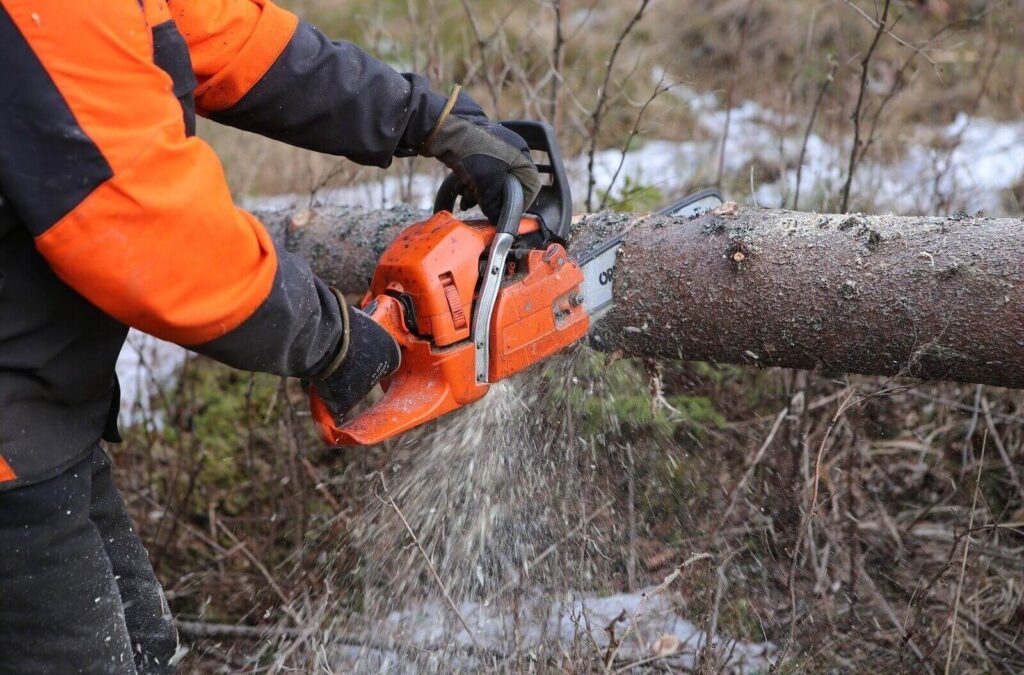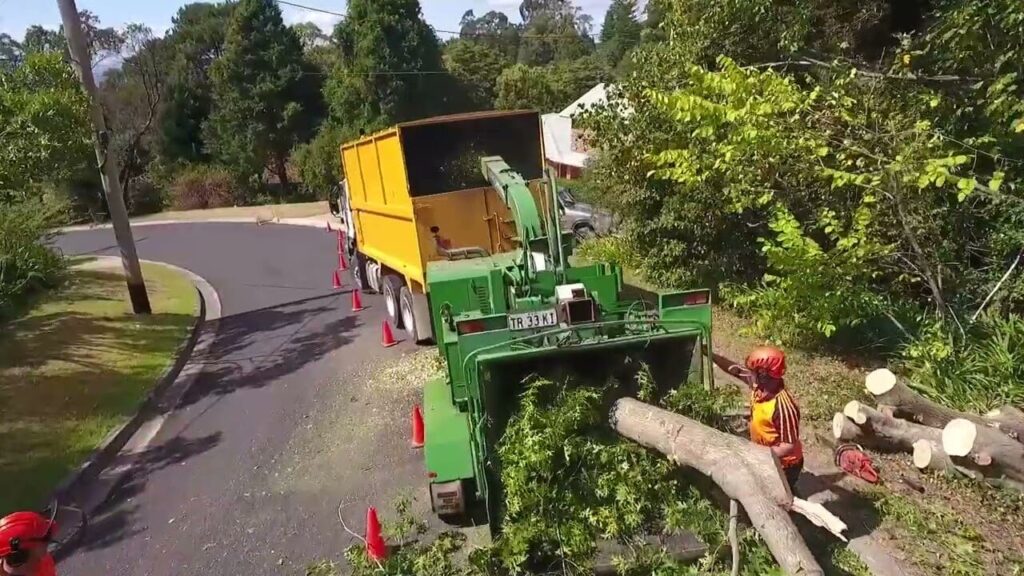Trees play a vital role in enhancing the beauty and biodiversity of the Central Coast. However, there are circumstances where tree removal becomes necessary to maintain the delicate balance between aesthetics and ecology. It is important to understand the importance of tree removal and how it contributes to the preservation of coastal beauty and biodiversity.
Understanding the Importance of Tree Removal
When it comes to the relationship between trees and coastal beauty, there is a need to balance the aesthetics with ecological considerations. While trees provide shade, visual appeal, and habitat for wildlife, their unchecked growth can have negative effects on the surrounding environment.
Coastal areas are known for their breathtaking beauty, with picturesque views of the ocean and stunning landscapes. Trees, with their towering presence, add to this natural allure, creating a sense of tranquility and harmony. The gentle rustling of leaves in the coastal breeze is a symphony that soothes the soul.
However, sometimes, the beauty of the coast can be compromised when trees become overgrown and obstruct scenic views. Imagine standing on a cliff, hoping to capture a perfect sunset, only to have your vision blocked by a wall of branches and foliage. In such cases, selective tree removal becomes necessary to maintain the balance between aesthetics and ecology.
Balancing Aesthetics and Ecology
One of the primary reasons for tree removal central coast is to maintain a balance between aesthetics and ecology. Sometimes, trees can become overgrown and obstruct scenic views or interfere with human activities. In such cases, selective tree removal can help preserve the beauty of the coast while allowing for sustainable human enjoyment.

It is important to note that tree removal is not a call for indiscriminate destruction. Instead, it is a thoughtful and strategic approach to ensure that the coastal environment remains visually appealing while also supporting a thriving ecosystem. By carefully selecting which trees to remove, experts can create open spaces that enhance the natural beauty of the coast without causing irreparable harm.
Moreover, tree removal can also be beneficial in mitigating potential risks. In areas prone to storms or strong winds, overgrown trees can pose a danger to nearby structures and people. By removing these trees, the risk of falling branches or uprooted trunks can be significantly reduced, ensuring the safety of both residents and visitors. Learn more about maintaining the majestic blue mountains.
The Role of Tree Removal in Biodiversity Conservation
Tree removal also plays a crucial role in biodiversity conservation. While trees provide habitat for various species, their dense growth can limit the diversity of plant and animal life. By selectively removing certain trees, it is possible to promote the growth of native species and create a more sustainable ecosystem.
Coastal areas are home to a wide range of flora and fauna, each playing a unique role in maintaining the delicate balance of the ecosystem. However, when certain tree species dominate the landscape, they can outcompete and suppress other native plants, leading to a loss of biodiversity. By removing these dominant trees, space is created for the resurgence of native species, allowing them to thrive and contribute to a healthier and more diverse coastal ecosystem.
Furthermore, tree removal can also help restore natural habitats for endangered or threatened species. In some cases, invasive tree species can disrupt the delicate balance of coastal ecosystems, pushing native species to the brink of extinction. By removing these invasive trees, conservation efforts can be focused on restoring the habitats of these vulnerable species, ensuring their survival for generations to come.
In conclusion, tree removal on the Central Coast is a delicate process that aims to strike a balance between aesthetics and ecology. By selectively removing trees, experts can preserve the beauty of the coast while also promoting biodiversity and mitigating potential risks. It is a testament to the intricate relationship between humans and nature, where careful intervention can lead to a harmonious coexistence.
The Process of Tree Removal on the Central Coast
Tree removal on the Central Coast involves a systematic approach to identify trees for removal and ensure safe and effective techniques are employed. This process aims to minimize landscape disruption and maintain the integrity of the coastal environment.
The Central Coast is known for its stunning natural beauty, with lush forests and picturesque landscapes. However, there are times when tree removal becomes necessary to ensure the safety of both humans and the environment. The process of tree removal is not a simple task; it requires careful planning and execution to minimize any negative impacts.

Identifying Trees for Removal
Before any tree removal takes place, it is important to carefully assess the condition and location of the trees. Trees that pose a safety risk or are diseased, damaged, or interfering with infrastructure may be identified for removal. This evaluation ensures that tree removal is carried out with consideration for both human safety and ecological impact.
Arborists, who are trained professionals in tree care, play a crucial role in identifying trees for removal. They have the expertise to evaluate the health and structural integrity of trees, determining whether they pose a risk to surrounding structures or the general public. By conducting thorough inspections, arborists can identify potential hazards and make informed decisions regarding tree removal.
Furthermore, arborists take into account the ecological impact of tree removal. They consider factors such as the tree’s role in the ecosystem, its contribution to biodiversity, and its aesthetic value. By carefully weighing these factors, arborists can ensure that the removal of a tree is justified and necessary.
Safe and Effective Tree Removal Techniques
Once trees are identified for removal, professional arborists employ safe and effective techniques to minimize negative impacts. These techniques include tree felling, stump removal, and proper disposal of tree debris. By following best practices, arborists can mitigate any potential harm to the surrounding environment and prevent further damage to coastal beauty.
Tree felling, the process of cutting down a tree, requires precision and expertise. Arborists carefully plan the direction of the tree’s fall to avoid any damage to nearby structures or vegetation. They may use ropes, pulleys, and specialized equipment to control the tree’s descent, ensuring a safe and controlled removal.
Stump removal is another important aspect of tree removal. Leaving a stump behind can lead to regrowth or become a tripping hazard. Arborists use various techniques to remove stumps, such as grinding or excavation, depending on the size and location of the stump. This ensures a clean and complete removal of the tree, leaving no trace behind.
Proper disposal of tree debris is also a crucial step in the tree removal process. Arborists ensure that all branches, leaves, and other tree remnants are properly disposed of or recycled. This helps to minimize waste and reduce the environmental impact of the removal process.
In conclusion, tree removal on the Central Coast is a meticulous process that involves careful evaluation, planning, and execution. Arborists play a vital role in identifying trees for removal and employing safe and effective techniques. By considering both human safety and ecological impact, arborists ensure that tree removal is carried out in a responsible and sustainable manner, preserving the natural beauty of the coastal environment.
The Impact of Tree Removal on Coastal Beauty
While tree removal may seem counterintuitive to preserving coastal beauty, it can actually help in preserving scenic views and minimizing landscape disruption.
Coastal beauty is a delicate balance of nature’s elements, where the land meets the sea, creating a mesmerizing fusion of colors, textures, and sounds. However, sometimes this beauty can be obstructed by the presence of trees that have grown too tall or have outgrown their surroundings.
Preserving Scenic Views
Tree growth can obstruct panoramic coastal views and limit the visual appeal of the area. Imagine standing on a cliff overlooking the vast expanse of the ocean, only to have your view obscured by a wall of branches and leaves. By selectively removing trees that obstruct scenic views, it is possible to enhance the natural beauty of the Central Coast, allowing residents and tourists to fully enjoy the breathtaking landscapes.
Picture yourself standing on a pristine beach, feeling the soft sand beneath your toes, and gazing out towards the horizon. The absence of obstructive trees allows your eyes to wander freely, taking in the expansive beauty of the coastline. With each tree strategically removed, the panoramic views become clearer, revealing the true majesty of the coastal landscape.

Minimizing Landscape Disruption
In some cases, trees that have outgrown their surroundings can cause damage to nearby infrastructure or disturb the natural landscape. As trees grow taller and wider, their roots extend deeper into the ground, potentially compromising the stability of nearby structures such as roads, buildings, and even coastal erosion control measures.
By removing these trees, the coastal environment can be preserved in its natural state, minimizing disruption and maintaining the integrity of the ecosystem. The removal of trees that pose a risk to infrastructure ensures the safety of coastal communities and prevents costly repairs in the long run.
Furthermore, the removal of trees that have outgrown their surroundings allows other native plant species to thrive. When a tree dominates an area, it can create a dense shade that limits the growth of smaller plants and inhibits the diversity of the coastal ecosystem. By selectively removing these trees, sunlight can penetrate the forest floor, encouraging the growth of a variety of plants and creating a more balanced and vibrant coastal landscape.
Coastal beauty is a fragile treasure that requires careful management to ensure its preservation. While tree removal may seem contradictory to the concept of preserving nature, it is a necessary step in maintaining the scenic views and minimizing landscape disruption along the Central Coast. By selectively removing obstructive trees, we can enhance the natural beauty of the coastline, allowing both residents and tourists to immerse themselves in the awe-inspiring landscapes that define this unique coastal region.
Tree Removal and Biodiversity Protection
Tree removal can have a positive impact on biodiversity conservation by promoting the growth of native species and preventing the spread of invasive species.
Promoting Native Species Growth
Removing certain trees can create space and resources for the growth of native species. This, in turn, enhances biodiversity by providing a suitable habitat for a wider range of plant and animal life, contributing to the overall health and resilience of the coastal ecosystem.
Preventing Invasive Species Spread
Invasive species can have a detrimental effect on the coastal environment by outcompeting native species. Removing trees that serve as hosts for invasive species can help prevent their spread and protect the delicate balance of the coastal ecosystem. It is important to follow local guidelines and regulations to ensure the removal is conducted ethically and in line with conservation efforts.
Regulations and Guidelines for Tree Removal
Tree removal on the Central Coast is subject to specific regulations and guidelines to ensure responsible and sustainable practices.
Understanding Local Tree Removal Laws
Before any tree removal takes place, it is essential to understand the local laws and regulations that govern tree removal on the Central Coast. These laws are in place to protect the environment and ensure that tree removal is carried out in a responsible manner.
Best Practices for Ethical Tree Removal
Ethical tree removal involves following best practices to minimize negative impacts and preserve the beauty and biodiversity of the Central Coast. This includes employing qualified professionals, using safe techniques, and considering alternative options such as tree transplanting or planting native species to compensate for any tree removal.
In conclusion, tree removal on the Central Coast plays a significant role in protecting coastal beauty and biodiversity. By understanding the importance of tree removal, following proper processes, and considering the impact on the ecological and aesthetic aspects, it is possible to maintain the delicate balance between human enjoyment and environmental preservation. Responsible tree removal practices ensure the long-term sustainability and beauty of the Central Coast for generations to come.

